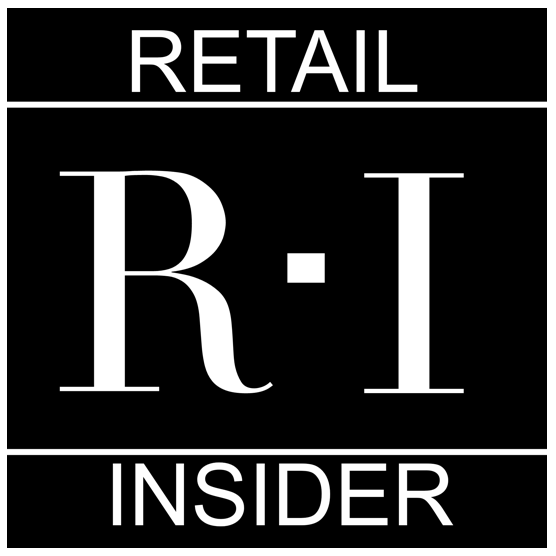Large Conglomerates Dominate the Canadian Retail Industry: Report
/By Mario Toneguzzi
The CSCA Retail 100 report, created by the Centre for the Study of Commercial Activity at Ryerson University, has found that the top 100 retail conglomerates in Canada account for 75 per cent of non-automotive retail sales in the country.
The report by Christopher Daniel and Tony Hernandez said that those conglomerates collectively operated 424 retail chains and controlled $267 billion in total retail sales in 2017, accounting for a large majority of Canada’s retail economy.
The top three conglomerates (Weston Group, Walmart Stores Inc., and Costco Wholesale Corp.) account for 28 per cent of total non-automotive retail sales in Canada, said the report.
“This illustrates that a significant share of Canada’s retail buying power is concentrated in the hands of a small number of very large retail organizations. In addition to these top three conglomerates, there were a total of 33 organizations with at least one billion in total sales, and this ‘Billion Dollar Club’ (BDC) accounted for 67 per cent, or $246 billion, of non-automotive retail sales in Canada for 2017. BDC retailers controlled a network of approximately 21,500 stores and accounted for almost 439 million square feet of retail store space. The BDC accounts for 89 per cent of total CSCA Retail 100 sales, 67 per cent of total Canadian non-automotive sales, and 42 per cent of total Canadian retail sales in 2017,” said the report.
In an email, the authors of the report said the purpose of the Retail 100 study is to identify and track metrics on the leading retail conglomerates in Canada as ranked by total sales / market share so that insight can be gained into the structure of the Canadian retail economy, evaluate how that structure is changing over time, and to understand what role the largest retail conglomerates play within it.
“The largest retail conglomerates with the dominant share of the Canadian retail market operate differently than mid-sized and small retailers because their size and market control gives them many important advantages,” said the authors.
“The top 100 retail conglomerates control 75 per cent of non-automotive retail sales in Canada. This means that a small group of corporate entities are able to exert a considerable amount of influence on the Canadian retail economy in the form of competitive pressures on other medium and small size retail firms and also on the commercial leasing companies that provide the retail space in which these top retail conglomerates operate. Understanding the marketing strategies and positioning that these top level retail conglomerates adopt gives us additional insight into the ongoing processes that are continuously shaping Canada's retail economy at the highest levels of market share.”
Daniel and Hernandez said the key findings of the report include market control and market concentration.
“Over the years, the Retail 100 report has highlighted a small but steady decline in the ratio of Canadian controlled companies versus those headquartered in the United States. Our research has shown that from 2012 to 2017, Canadian controlled firms’ share of the Retail 100 has declined by two per cent while U.S. firms have increased their control by 1.5 per cent and other countries increased collectively by 0.5 per cent,” they said.
“We measure concentration ratios by looking at the market share of the top four conglomerates within a given retail sector - our CR4 measure. Six out of the nine retail sectors in Canada have CR4's above 40 per cent. So, basically, within six out of nine retail sectors, the top four leading retailers in the sector control over 40 per cent of the market share. This number varies markedly by retail sector, general merchandise is highly concentrated, fashion retail less so.”
The researchers said the findings track the changing structure and control of market share by leading retailers operating in Canada.
“With the findings you’re left asking yourself whether the level of Canadian control of the retail industry or corporate concentration (i.e., how many firms that dominate a sector) matters,” they said. “These are long-standing debates across many industries that have become even more complex in our global retail marketplace. For example, the competition bureau in Canada allows market concentration ratios to be relatively high as a way of allowing Canadian companies to generate globally competitive economies of scale. Does this ‘economies of scale’ argument result in a better deal for Canadian consumers? How significant is the leakage of retail sales dollars outside of Canada? The jury is divided.”
Photo: Clear Demand
Daniel and Hernandez cite the following as trends in the retail industry identified in the report:
● Corporate concentration is high, with a relatively small number of conglomerates collectively controlling a large proportion of Canadian retail spend;
● The top three conglomerates control just over 28 per cent of non-automotive retail sales;
● The top 10 conglomerates control 50 per cent of non-automotive retail sales;
● The Billion Dollar Club (BDC) controls 67 per cent of non-automotive retail sales;
● The CSCA Retail 100 controls 75 per cent of non-automotive retail sales;
● The level of concentration and market control varies by retail sector, from very high in general merchandise to relatively low in the fashion sector;
● The importance of U.S. retailers in Canada with these foreign players accounting for almost 42 per cent of the market; and
● The nature of competition within the Canadian retail industry, with a small number of conglomerates leading in each retail sector with the exception of the fashion sector where a large number of retailers compete.
Mario Toneguzzi, based in Calgary has 37 years of experience as a daily newspaper writer, columnist and editor. He worked for 35 years at the Calgary Herald covering sports, crime, politics, health, city and breaking news, and business. For 12 years as a business writer, his main beats were commercial and residential real estate, retail, small business and general economic news. He nows works on his own as a freelance writer and consultant in communications and media relations/training. Email: mdtoneguzzi@gmail.com.




















![L.L.Bean Continues Canadian Expansion with 1st Toronto Store [Photos]](https://images.squarespace-cdn.com/content/v1/529fc0c0e4b088b079c3fb6d/1603908990197-KDT3UNTEHFBFJF5FJ36N/L.L.Bean_Don_Mills_8.jpg)





![Retail-insider-NRIG-banner-300-x-300-V01-3[2].jpg](https://images.squarespace-cdn.com/content/v1/529fc0c0e4b088b079c3fb6d/1593476525034-QRWBY8JUPUYFUKJD2X9Z/Retail-insider-NRIG-banner-300-x-300-V01-3%5B2%5D.jpg)
![Retail-insider-NRIG-banner-300-x-300-V01-2[2].jpg](https://images.squarespace-cdn.com/content/v1/529fc0c0e4b088b079c3fb6d/1593476491497-W6OZKVGCJATXESC9EZ0O/Retail-insider-NRIG-banner-300-x-300-V01-2%5B2%5D.jpg)
![Retail-insider-NRIG-banner-300-x-300-V01-4[2].jpg](https://images.squarespace-cdn.com/content/v1/529fc0c0e4b088b079c3fb6d/1593476508900-TJG5SNQ294YNOCK6X8OW/Retail-insider-NRIG-banner-300-x-300-V01-4%5B2%5D.jpg)